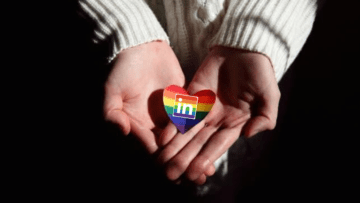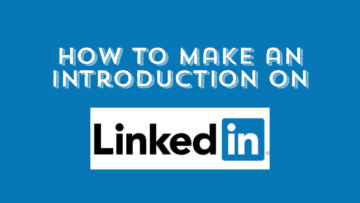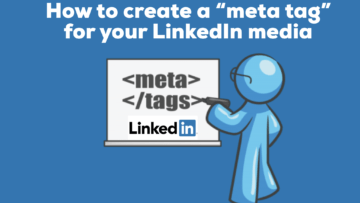Are you using your pronouns on LinkedIn or elsewhere? Do you even know what using your pronouns means?
Did you know that on Facebook there were 58 gender options?
A little over a half-century ago, on June 28, 1969, the Stonewall riots occurred in Greenwich Village after a police raid, that involved patrons at a gay club, became violent.
June is now designated LGBT Pride month.
If you are an employer, a hiring manager, in HR, an ally, part of the LGBTQ+, or a someone who wants to learn more about LGBTQ+ Inclusivity in the Workplace, save the date of Monday, August 10, 2020 6-8 PM for a special presentation on this topic on Zoom. The image used for this August 10th event is the straight ally flag, which represents that you are straight, but you do not hate. You may also want to learn how to be a Safezone Ally.
Read about some companies that celebrate pride all year long and check out the Philly Gay Pride site, Philadelphia Gay News, and tune into #globalpride on 6abc on Saturday, June 27th.
As a straight ally, I felt the need to educate myself to learn more about all of these gender options. The educator in me is now sharing this knowledge with you. For example, Trans* with the asterisk is used to denote inclusivity and diversity of gender identities and “interrupt the viewers and readers attention momentarily, to draw attention to genderist assumptions about identities” (Patton et al., 2016, p. 179).
There are many differences between sex, gender, and sexual identities that are very distinctive and, without definitions, it might be challenging to compare and contrast. Sex is typically defined as differences between males and females that are biological and physiological in nature with DNA chromosomes, genes, and sexual organs (Patton et al., 2016). Gender refers to a differentiation that is influenced socially relating to roles and behaviors, as well as attributes and activities in how individuals conduct themselves in society (Patton et al., 2016). Although closely related, gender and sex are not synonymous.
These identities interact with an individual’s experience by how they identify, which could be feminine, masculine, both, or neither as a sense of self and choice of gender expression. Gender expression might evolve and change through an individual’s life. To better understand and make sense of these concepts, binary systems (categories of two things) can be used to identify sex as male or female, gender identity as male or female, gender role as masculine or feminine, and sexual orientation as heterosexual or homosexual.
Society is dealing with a spectrum of gender identity and how people behave and present or identify themselves. Individuals are grappling with issues regarding bathrooms, dorm roommates, sports competitions, legal documents, marriage, health insurance, healthcare services, surgeries, military, scouting, laws, policies, discrimination, “alienation, harassment, … violence,” and so much more (Patton et al., 2016, p. 180).
Other identities, such as race, ethnicity, or social class, interact with individuals’ gender identities by their personal interactions, peer culture, and environments (Patton et al., 2016). Individuals’ understanding of acceptable expressions of masculinity and femininity differ across other identities. People can explore how they dress, wear their hair and makeup, wear jewelry, and set their posture based on their own self-concept and self-perception (Patton et al., 2016).
Many of the definitions for these terms for gender expression can be found in this glossary. Perhaps some of these terms may be new to you, as they were to me.
- Agender
- Androgyne
- Androgynous
- Bigender
- Cis
- Cisgender
- Cis Female
- Cis Male
- Cis Man
- Cis Woman
- Cisgender Female
- Cisgender Male
- Cisgender Man
- Cisgender Woman
- Female to Male
- FTM
- Gender Fluid
- Gender Nonconforming
- Gender Questioning
- Gender Variant
- Genderqueer
- Intersex
- Male to Female
- MTF
- Neither
- Neutrois
- Non-binary
- Other
- Pangender
- Trans
- Trans*
- Trans Female
- Trans* Female
- Trans Male
- Trans* Male
- Trans Man
- Trans* Man
- Trans Person
- Trans* Person
- Trans Woman
- Trans* Woman
- Transfeminine
- Transgender
- Transgender Female
- Transgender Male
- Transgender Man
- Transgender Person
- Transgender Woman
- Transmasculine
- Transsexual
- Transsexual Female
- Transsexual Male
- Transsexual Man
- Transsexual Person
- Transsexual Woman
- Two-Spirit
You have seen many companies use a pride overlay on their logos, and this month LinkedIn is proudly sporting their rainbow logo. But do individuals use their pronouns on LinkedIn? Moreso no, then yes, but some do. If you follow #pronouns and #lgbtq and related hashtags on LinkedIn, you will see that people are making posts, and the number of followers is sure to increase over time, especially with the new Federal law protecting LGBTQ rights in the workplace.
References
Patton, L. D., Renn, K. A., Guido, F. M., & Quaye, S. J. (2016). Student development in college (3rd ed.). John Wiley & Sons, Inc.
NEXT STEPS
- Subscribe to my newsletter on LinkedIn™ for bright ideas on how to manage your career.
- If you need a resume or LinkedIn™ profile to get you to your next step, book a call to chat!
- Join as a member at https://greatcareers.org/membership of the #1 business networking association on the Philadelphia Business Journal’s Book of Lists four years in a row!
- To support our charity at KeepOnSharing.com use the referral code Career
- Follow #GreatCareersPHL
AUTHOR BIO
Lynne M. Williams is the Executive Director of the Great Careers Network, a volunteer-run 501(c)3 nonprofit organization that provides career development and networking connections for 1) job seekers in career transition, including veterans, and 2) employed and self-employed for career management.
Aside from writing keyword-focused content for ATS resumes and LinkedIn™ profiles, Lynne is writing her doctoral dissertation on LinkedIn™ for Job Seekers. She is a contributing author on “Applying to Positions” in Find Your Fit: A Practical Guide to Landing the Job You Love, along with the late Dick Bolles, the author of What Color is Your Parachute?, and is also a speaker on career topics.




